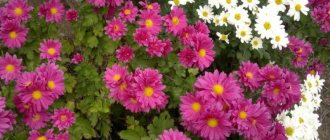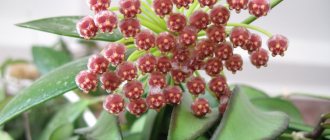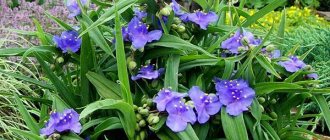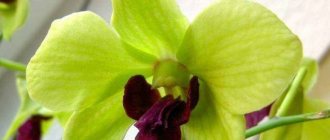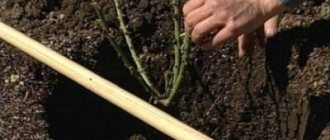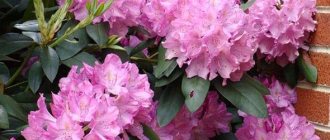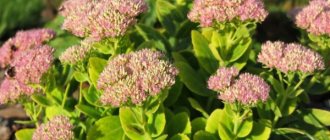Aquilegia terry belongs to the perennial flowering shrubs of the Ranunculaceae family and has more than 100 varieties. The plant also has alternative names - columbine, elf flower, orlik, etc. The unusual shape and unpretentiousness in maintenance make terry aquilegia one of the most common species among gardeners.
Aquilegia terry is a spreading shrub that reaches 1 m in height. This is a plant with a strong, well-developed root system, the size of which often does not exceed 1 m. The stems have round, lace-shaped leaves, similar in appearance to clover. The large flowers of the shrub bend towards the ground and reach up to 10 cm in length.
Most flowers have elongated growths - spurs, which are necessary for collecting nectar
Aquilegia terry has a rich range of colors; the color of one flower can consist of several shades. The habitat of the plants is the Caucasus, Altai, Crimea, and the Far East.
Description of the plant
Aquilegia is a spreading bush reaching a height of 1 meter. The root system is strong, thick and well developed, usually not more than half a meter. The leaves are round, lacy, reminiscent of clover. Basal greens grow on long, dissected petioles; on stems they are sessile.
The flowers are drooping to the ground, double and large, can grow up to 10 centimeters. Most have elongated growths - spurs, which are used to collect nectar. The color scheme is different and can combine several shades.
Varieties of Barlow
Aquilegia Barlow is a hybrid of the common eagle and other hybrids, rarely found in the wild.
Barlow Pink
Flowers: bright red. Height: 80 centimeters. Flowering period: 2 months. Preferences: shady areas and high humidity.
Barlow Winky
Flowers: double, not drooping, of various colors. Height: 50 centimeters. Flowering period: May-August. Features: frost resistance and wind resistance.
Krista
Flowers: purple, drooping at the end of the day. Preferences: partial shade.
White
Similar to the variety Krista. The only difference: the color of the flowers is white.
Nora Barlow
Flowers: white-pink, sometimes white-red, with a dark core, large, double. Height: 70 centimeters. Shape: spreading.
Application in landscape design
Tall varieties of terry aquilegia are combined in landscape compositions with irises, hosts, bells or poppies.
Low-growing types of aquilegia are used to decorate alpine slides and rockeries; the combination with carnations looks good
Shrubs are placed with spruce and fir trees, and some landscape designers plant aquilegia near the pond. In flower arrangements you can also find a combination of different varieties of elf flower.
Specifics of growing flowers
Aquilegia is very unpretentious, but there are still some peculiarities when growing.
Site selection and preparation
The ideal place for aquilegia is partial shade, since the complete absence of sun will reduce the number of flowers, and constant direct light will not only affect the brightness, but can be destructive for the plant. If there is no shadow on the site, then the seat should be shaded. It is better to choose loamy and moist soil. You should first dig up the bed and get rid of the weeds.
See also
Planting and caring for perennial garden spurge, propagation and cultivationRead
Preparation of planting material
Planting material, namely aquilegia seeds, collected immediately after falling, is wrapped in a damp cloth and left to ripen in a cold, dry place, possibly in the refrigerator, and then planted. If planting occurs with the help of seedlings, then the seeds are also allowed to ripen by cooling, and then the following preliminary steps are performed:
- lower the seed 3 centimeters into pre-prepared containers with soil;
- sprinkle a little peat on top;
- carefully pour warm water and cover with film to create a “greenhouse” effect;
- then water with a small amount of water every 2-3 days;
- after three weeks, having noticed the emergence of seedlings, the film should be removed;
- After 4 leaves appear, the seedlings are ready for planting in the garden.
Planting scheme
As already mentioned, there are two options for planting aquilegia: seeds and seedlings. Rules for planting seeds:
- End of August - beginning of September:
- prepare the seat;
- place seeds;
- sprinkle with earth - about 1.5 centimeters;
- water a little;
- mulch with humus or peat.
- In spring, after the snow melts: after cooling, sow the seeds in a prepared place, controlling the moisture balance.
Transplanting seedlings:
- in June: seedlings are planted in prepared soil at a distance of 20 centimeters from each other, trying not to damage the roots.
Forcing in winter
Aquilegia can be made to bloom in winter. The following varieties are suitable for forcing:
- Fan
- Hybrid
- Alpine
- Glandular
- Canadian
You need to choose young plants that have bloomed for only one season. Selected bushes need to be watered regularly. At the end of summer, feed with a mineral complex.
In September, the bush is transferred to a pot. The container must be deep enough to accommodate the root. It is filled with nutritious substrate.
Aquilegia domestica
Aquilegia is kept in the shade outside until the temperature drops to +1 degree . They are then moved to a dark and cool room. A basement will do.
2 months before the expected flowering, the pots are transferred to a warm place . The temperature must be maintained at 12 - 15 degrees. If the room is dark, then be sure to arrange additional lighting. Watering is carried out as the soil dries.
After the plant has flowered, it must be returned to the flowerbed..
It cannot be used for re-forcing.
Plant care
In order for aquilegia to grow strong and healthy, you should follow basic rules of care.
Weeding and loosening the soil
Loosening the soil by no more than 20 centimeters is carried out after each watering or rain to prevent oxygen stagnation. You should also remember to weed when weeds appear.
Watering
Aquilegia loves humidity, but the plant should not be flooded. It is enough to water as soon as the soil dries. It is advisable to use irrigation products to simulate rain, since the leaves of the plant love to absorb raindrops. In rainy summers, additional moisture is not needed.
The soil
Aquilegia roots often break through the ground, so the plant needs to be replenished with soil annually, while removing an 8-centimeter layer of the old one.
Top dressing
The best time to apply organic or mineral fertilizers is cloudy or rainy weather. If the summer turns out to be sunny, then you should feed the aquilegia in combination with watering in the evening, and then shade it well for a day. Fertilizers are applied in May, June and after flowering.
How to care for aquilegia after flowering?
After flowering of the aquilegia, it is necessary to prune the shoots that have lost their vigor to a leaf rosette. Healthy cuttings will make excellent compost; infected and weak ones should be burned. Also, the period after flowering is the best time to divide the plant and collect seeds.
See also
Rules for planting and caring for perennial echinacea, 10 best varieties for open groundRead
Winter care
Aquilegia is frost-resistant, however, when it reaches 5 years of age, the roots of the plant come to the surface and require shelter in winter. To do this, the bush should be mulched with humus and peat compost and sprinkled with fresh soil. Preparatory measures for cold weather should begin in the fall.
Trimming
As already mentioned, pruning of aquilegia is carried out after flowering to avoid random self-seeding and rejuvenate the bush.
Wintering
In autumn, special attention should be paid to bushes that are 4–5 years old. The fact is that their roots begin to protrude from the ground, and this is very harmful to young leaves and shoots. In this regard, when the peduncle is removed, the surface of the soil under the bush should be sprinkled with humus mixed with peat manure compost, this will cover the roots. In this case, the flower will be fed and protected from autumn and winter cold.
Aquilegia (Catchment). Unpretentious Plants for Shady Flower Gardens
Control of diseases and pests of aquilegia
The Elven slipper is susceptible to the following diseases:
- powdery mildew - appears with a lack of sunlight and high humidity. Prevention - treating greenery with a sulfur solution. Treatment – folk and chemical means;
- mosaic is the most dangerous, incurable disease. If symptoms are detected, the bush should be dug up and burned;
- gray rot - at the initial stage it is possible to treat with Fundazol, if it is advanced - digging up the plant and further burning it.
Among the pests, aquilegia can be attacked by aphids, caterpillars and mites. Folk remedies or chemicals should be used against them. If left untreated, the plant may die in a couple of days.
Medicinal properties
Aquilegia vulgaris Nora Barlow
Traditional medicine does not use aquilegia in pharmacology. The folk one, on the contrary, widely uses it.
It is believed to treat diseases such as:
- Hepatitis
- Impotence
- Pneumonia
- Stomach colic
- Mastopathy
- Menstrual pain
- Cough
- Skin diseases
- Dropsy
Decoctions are made from the plant . Which are used in the form of drinks, lotions, compresses. Raw materials are harvested during the flowering of the plant. Then it is dried. Store in fabric bags.
The use of traditional medicine from poisonous plants by pregnant women and nursing mothers is strictly prohibited. Children under 14 years old.
Aquilegia - poisonous flower
Blooming Catchment
The ground part of the aquilegia contains poison. Cases of poisoning are common. Children pick beautiful flowers, then put their hands in their mouths. Adults, unknowingly, decorate dishes with it.
Many, having found a traditional medicine recipe containing it, try to get rid of diseases. You can’t do this without knowing the dosages. Use is possible only under the supervision of a specialist.
In medieval society, it was believed that aquilegia flowers protected against witchcraft and various types of damage. It was given to loved ones to protect them from misfortune.
Signs of aquilegia poisoning:
- Weakness
- Nausea
- Vomit
- Dizziness
- Drowsiness
- Convulsions
- Tingling tongue
- Darkening in the eyes
- Poisoned people can no longer see colors
- Heart Rate Failure
In case of poisoning, you need to take immediate action:
- Call an ambulance
- Drink activated carbon
- You can give the poisoned person to drink a raw chicken egg, milk, or eat a piece of butter. These products coat the walls of the stomach and minimize the absorption of toxins.
- A poisoned person should be placed on a heating pad
- Emergency doctors must be told what caused the poisoning
VIDEO: ?Aquilegia (catchment). Flower without problems! ?
Reproduction
The bush can be propagated in several ways.
Seeds
Aquilegia seeds are collected after flowering. To do this, the future “parents” should wear a gauze bag to collect seeds so as not to collect them from the ground. However, the chance of getting a flower identical to the mother is very low, since the plant interpollinates.
Dividing the bush
Dividing aquilegia is not the best method of propagation, as it can cause harm to the plant. An adult bush that has reached 5 years of age is suitable for this method:
- Divide the dug root into parts with a knife, leaving 3 buds on each;
- plant the divided root in the holes and water immediately;
- Feeding should be carried out only after grafting.
We take cuttings in the spring
The surest way to get the original appearance of a flower. To do this, use young spring shoots, cut off before the greenery blooms:
- cut the cuttings close to the soil;
- treat the cut with a root growth stimulating agent;
- fertilize the planting site with sand and peat and moisten it;
- Plant the cuttings a centimeter deep;
- the bed must be shaded;
- landing at a permanent place occurs in August.
In what ways can you reproduce?
Growing from seeds
Aquilegia is grown from seeds after harvesting in the fall or in the spring. The seeds are sown in special boxes or directly in open ground.
Sowing done in the fall will produce seedlings that are more friendly and lively. Whereas in the spring, it is recommended to freeze aquilegia seeds a little. You will have to wait about a month before the first shoots of aquilegia from seeds appear. Growing from seeds assumes an optimal steady-state temperature of +18°C.
Lilac colored aquilegia grown from seeds.
Aquilegia of dark lilac color goes well with purple and white inflorescences.
Propagation by cuttings
In relation to ornamental and varietal plants, their propagation by cuttings is possible. Why are cuttings broken off from an adult bush and planted in river sand? In such cases, it is good to get a small greenhouse or place the plants under film in a shaded place and regularly spray them with clean water. Before planting, it is recommended to thoroughly treat the orlik with a growth stimulator.
Delicate pink inflorescences for a real lady's garden.
Reproduction by bush branch
This propagation option is not so often used due to the fragility of the plant, as well as the depth of its rhizomes and the inconvenience of carrying out work for these reasons.
However, if it is necessary to propagate a flower by dividing the bush, this is done in late summer or early spring. Having dug up a flower, cut off the leaves (almost all) from it using a pruner. Only the strongest and youngest are left. The root system is thoroughly cleaned of lumps of dirt and washed.
After this, the cuttings are made approximately 7 cm long, and the taproot is divided into several lobes by cutting. It is important to ensure that all parts have small roots and buds. The parts are sequentially planted in soil prepared in advance (loosened and with a nutrient composition). It is important to maintain a regular watering regimen.
Multicolored aquilegia in the field.
White and purple aquilegia flowers in the front garden will delight the eyes of their owner and his guests.
